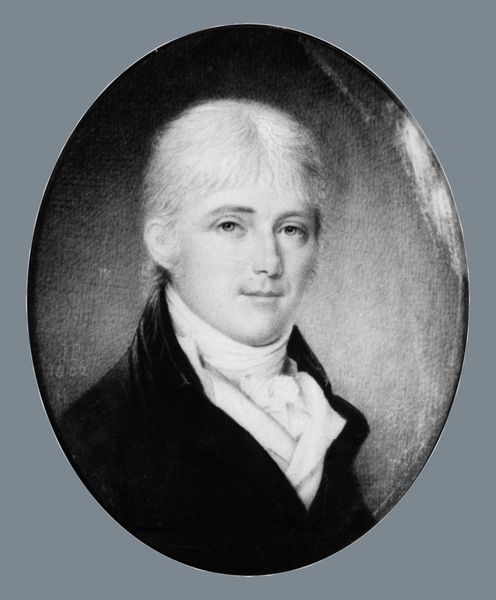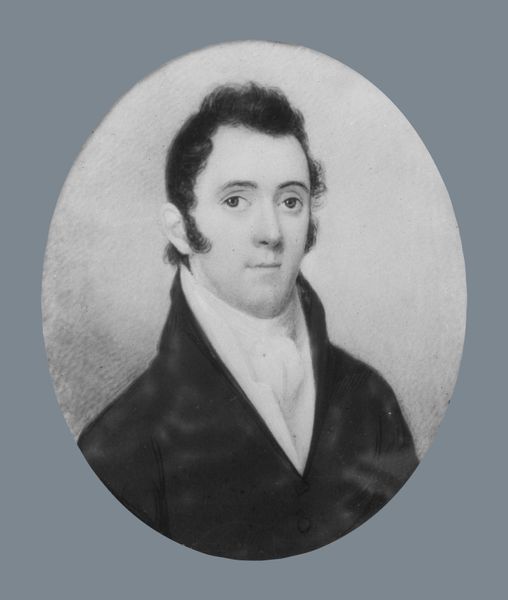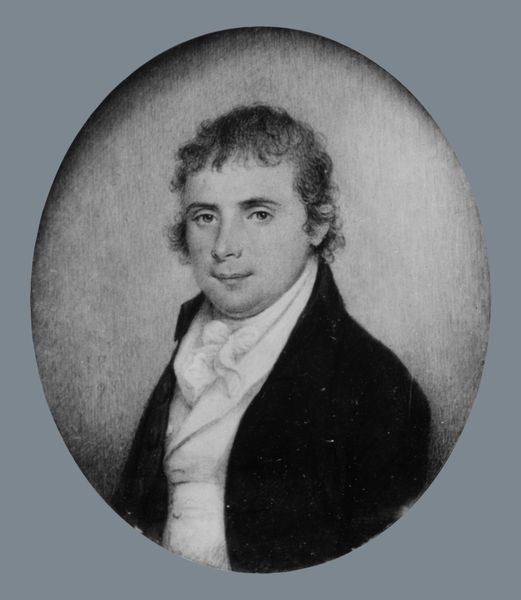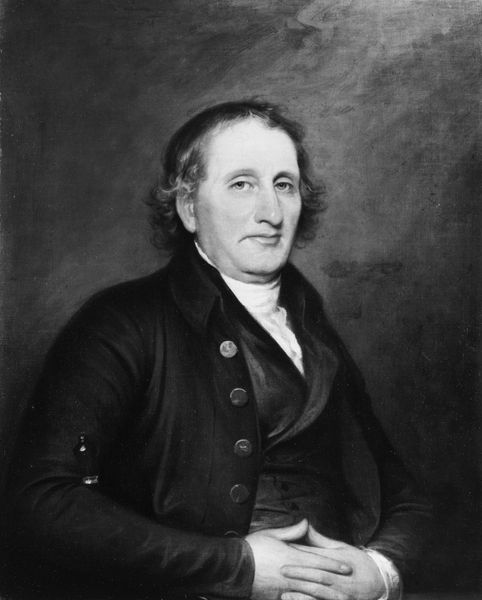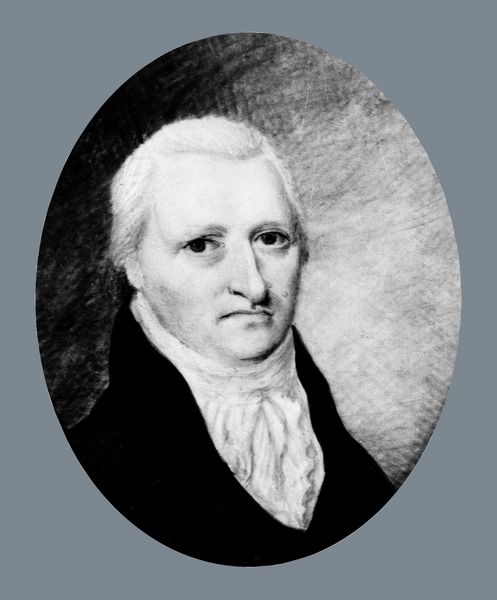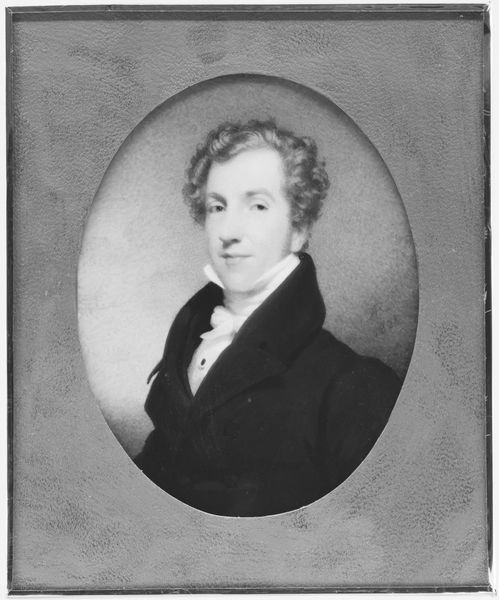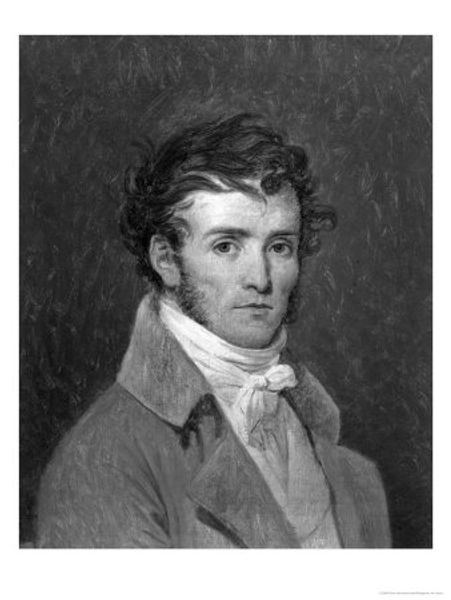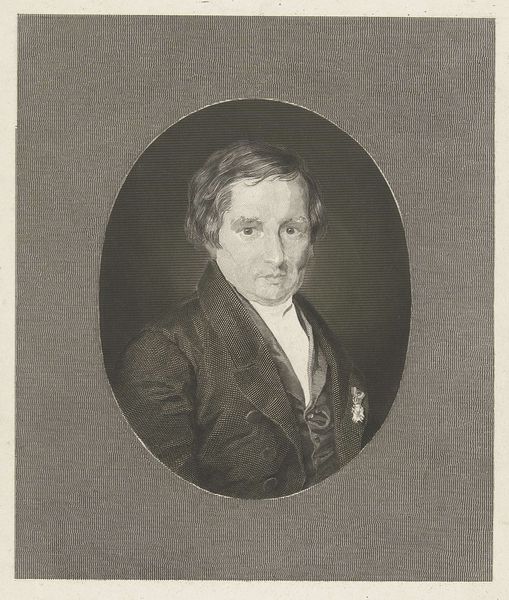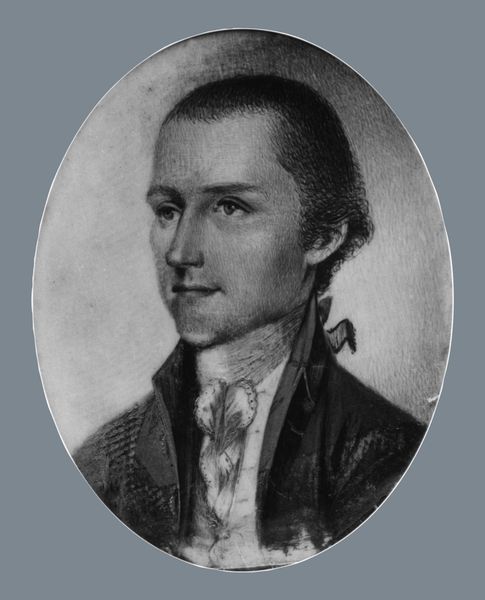
oil-paint
#
portrait
#
neoclacissism
#
portrait
#
oil-paint
#
academic-art
#
realism
Dimensions: 9 3/4 x 7 7/8 in. (24.8 x 20 cm)
Copyright: Public Domain
Editor: This is Charles Willson Peale's "Portrait of a Gentleman," dating from around 1772 to 1775. It's oil on canvas, and currently at The Met. It strikes me as quite serious and perhaps a little melancholic. What stands out to you when you look at it? Curator: It's fascinating how portraits function as vessels of memory. Note the subject's direct gaze. What do you think he is communicating to the viewer? Editor: Perhaps a desire to be seen as thoughtful or respectable? There is definitely a stillness that exudes control, yet also the sensitivity in the corners of his eyes hints that there is more under the surface than initially meets the eye. Curator: Exactly. Now consider the placement of the sitter within the oval frame. Does the frame confine him, or does it elevate his presence? Look closer. What clues about status and profession are deliberately placed by Peale for future generations to consider? Editor: Well, his clothing is simple, but well-kept; the stark white cravat signals, if not wealth, at least a professional standing, maybe scholarly? The frame and limited palette add a classical sense to it. I hadn’t considered that at first! Curator: Indeed! White symbolizes purity and enlightenment. Now consider Neoclassicism as a visual language during the American Revolution. Do you see revolutionary symbolism, even subtly employed? Editor: I suppose the very act of commissioning a portrait speaks to a certain level of social and cultural aspiration. And the adoption of Neoclassical aesthetics might align him with ideals of liberty and republicanism? Curator: Precisely! Even without overt symbols, cultural memory is encoded in these choices. What did you learn, viewing this portrait? Editor: It’s helped me realize that portraiture isn't just about capturing a likeness; it is about carefully constructing and conveying social messaging! Curator: Indeed! And portraits serve as lasting reflections of individuals, societal values, and political movements across time.
Comments
No comments
Be the first to comment and join the conversation on the ultimate creative platform.

